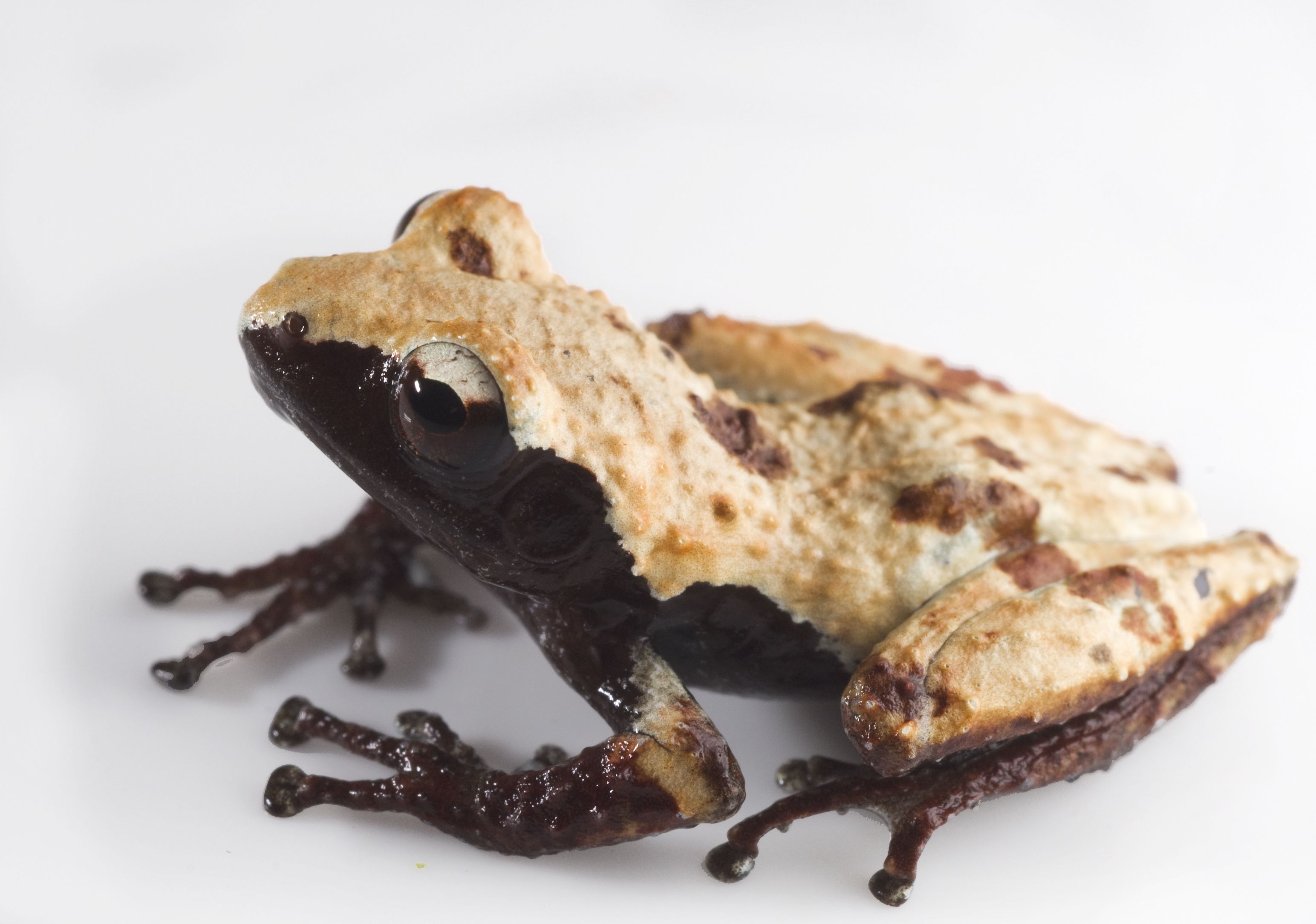| Citation |
IUCN SSC Amphibian Specialist Group 2017. Theloderma palliatum. The IUCN Red List of Threatened Species 2017: e.T48100463A48100482. http://dx.doi.org/10.2305/IUCN.UK.2017-2.RLTS.T48100463A48100482.en. Downloaded on 08 May 2019. |
Description |
Geographic Range
NATIVE
Extant (resident)
Viet Nam
NUMBER OF LOCATIONS
1
UPPER ELEVATION LIMIT
1,625 metres
LOWER ELEVATION LIMIT
1,625 metres
Geographic Range in detail
Population
CURRENT POPULATION TREND
Decreasing
NUMBER OF MATURE INDIVIDUALS
POPULATION SEVERELY FRAGMENTED
Unknown
CONTINUING DECLINE OF MATURE INDIVIDUALS
Population in detail
EXTREME FLUCTUATIONS
NO. OF SUBPOPULATIONS
CONTINUING DECLINE IN SUBPOPULATIONS
EXTREME FLUCTUATIONS IN SUBPOPULATIONS
ALL INDIVIDUALS IN ONE SUBPOPULATION
NO. OF INDIVIDUALS IN LARGEST SUBPOPULATION
DESCRIPTION
Very little is known of the population size and trends of this species. Only three individuals were recorded during twenty surveys carried out between 2008–2010 at the type locality, however this is likely related to detectability rather than true rarity (Rowley et al. 2011). Populations are suspected to be decreasing due to ongoing declines in the quality and extent of its habitat.
Habitat and Ecology
SYSTEM
Terrestrial
HABITAT TYPE
Forest
GENERATION LENGTH (YEARS)
CONGREGATORY
MOVEMENT PATTERNS
Not a Migrant
CONTINUING DECLINE IN AREA, EXTENT AND/OR QUALITY OF HABITAT
Yes
Habitat and Ecology in detail
HABITAT AND ECOLOGY
This is a small, arboreal species that inhabits montane evergreen forest (Rowley et al. 2011). Egg clutches of four and five individuals of this species have been found in a partially water-filled, hollow, fallen tree trunk (Orlov et al. 2012). It is estimated that parts of this species habitat are considerably disturbed due to ongoing aquaculture, agriculture, infrastructure, and harvest of forest products.
CLASSIFICATION SCHEME
Habitats Suitability Major importance
1. Forest 1.9. Forest - Subtropical/Tropical Moist Montane Suitable Yes
Threats
Agriculture & aquaculture
Annual & perennial non-timber crops
Marine & freshwater aquaculture
Biological resource use
Hunting & trapping terrestrial animals
Logging & wood harvesting
Threats in detail
THREATS
As the species has only been recorded from one small area and appears to depend on wet, dense montane rainforest (Rowley et el. 2011), degradation of this habitat is likely to be a threat to its survival. Despite the protected status of its range, habitat loss and modification are ongoing in the form of established aquaculture, agriculture (primarily coffee), infrastructure, and harvest of both timber and non-timber forest products (Le 2011, J. Rowley pers. comm. February 2014). In addition, harvesting for the international pet trade, as faced by other members of its genus (Rowley et al. 2011, van Dijk and Bain 2004) may be a potential threat to this species; however the apparent difficulty in detecting the species may prevent this.
CLASSIFICATION SCHEME
Threats Timing Stresses Scope Severity Impact score Invasive species Virus
2. Agriculture & aquaculture 2.1. Annual & perennial non-timber crops 2.1.1. Shifting agriculture Ongoing
1. Ecosystem stresses 1.1. Ecosystem conversion
1.2. Ecosystem degradation
Unknown Unknown Unknown
2.1.2. Small-holder farming Ongoing
1. Ecosystem stresses 1.1. Ecosystem conversion
1.2. Ecosystem degradation
Unknown Unknown Unknown
2.1.3. Agro-industry farming Ongoing
1. Ecosystem stresses 1.1. Ecosystem conversion
1.2. Ecosystem degradation
2. Species Stresses 2.1. Species mortality
2.2. Species disturbance
2.3. Indirect species effects 2.3.7. Reduced reproductive success
Unknown Unknown Unknown
2.4. Marine & freshwater aquaculture 2.4.2. Industrial aquaculture Ongoing
1. Ecosystem stresses 1.1. Ecosystem conversion
1.2. Ecosystem degradation
2. Species Stresses 2.1. Species mortality
2.2. Species disturbance
2.3. Indirect species effects 2.3.7. Reduced reproductive success
Unknown Unknown Unknown
5. Biological resource use 5.1. Hunting & trapping terrestrial animals 5.1.1. Intentional use (species is the target) Future
2. Species Stresses 2.1. Species mortality
2.2. Species disturbance
Unknown Unknown Unknown
5.3. Logging & wood harvesting 5.3.3. Unintentional effects: (subsistence/small scale) [harvest] Ongoing
1. Ecosystem stresses 1.2. Ecosystem degradation
2. Species Stresses 2.1. Species mortality
2.2. Species disturbance
2.3. Indirect species effects 2.3.7. Reduced reproductive success
Unknown Unknown Unknown
Use and Trade
Use and Trade in detail
USE AND TRADE
There are currently no reports of use or trade of this species, however other members of Theloderma are known to be in demand for the global pet trade (Rowley et al. 2011, Kunz et al. 2010). |

